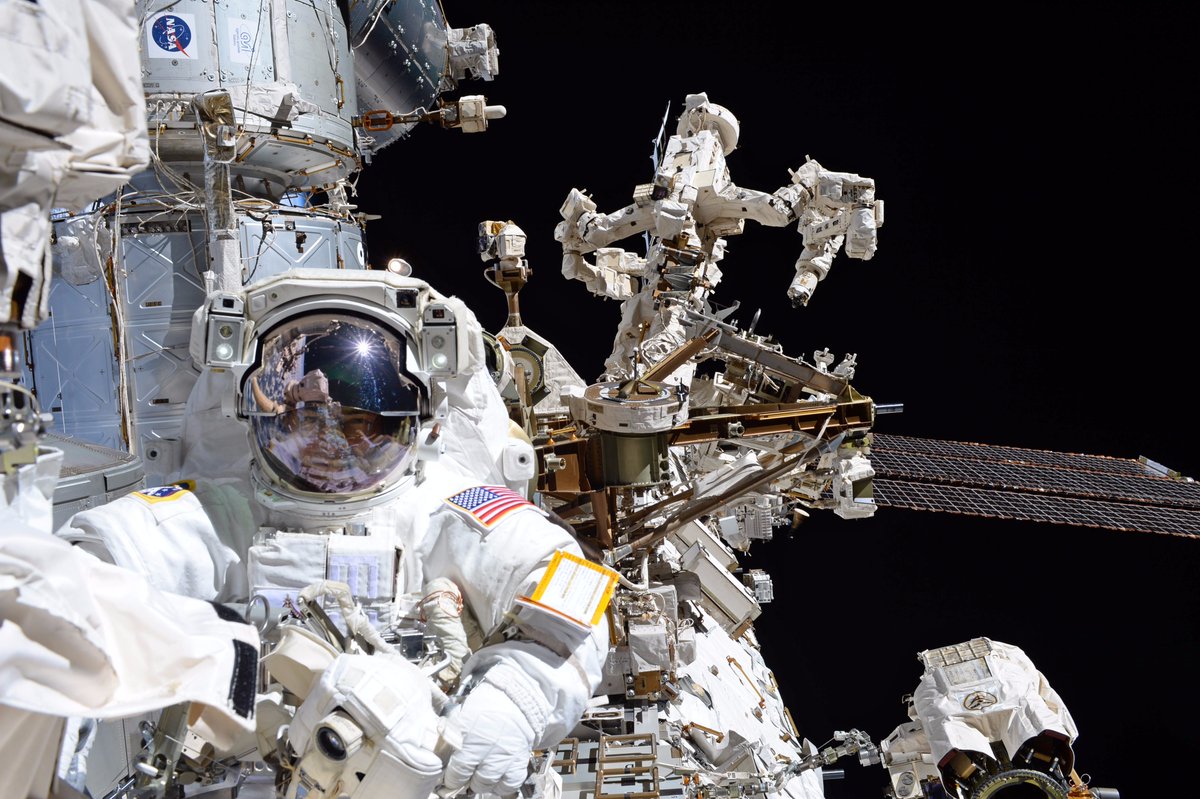NASA-funded spacesuit tech may help with menopause relief
A spinoff from the space shuttle program is offering people in menopause with relief from hot flashes, NASA says.

Space-inspired research may help regulate the "hot flashes" associated with menopause.
U.S. Air Force material originally destined for space shuttle-era spacesuit gloves is now part of a fabric line that is helping people coping with physical discomfort following the end of menstruation.
The U.S. National Institutes of Health estimates 1.3 million people in the country each year enter menopause; the condition can last for several years and some people experience "debilitating" symptoms, according to NASA.
Related: The full moon may influence sleep and menstrual cycles, scientists say

There's no biological cure for menopause, but some comfort appears to come from technology — called Outlast — that NASA's Johnson Space Center explored in the 1980s.
The aim back then was to help space shuttle astronauts regulate their temperature in the extreme environments of space. During spacewalks, astronauts swing between light and dark. The temperature can be as hot as 250 degrees Fahrenheit (120 degrees Celsius) in the sunlight and as low as minus 250 degrees F (minus 160 degrees C) in shadows.
The unique technology inspired by spacewalk protection now is helpful to manage menopause, Louise Nicholson, who founded London-based Fifty-One Apparel, which markets menopause-relief apparel, said in the NASA statement. "I did some initial research to find out what was on the market, and there was absolutely nothing apart from nightwear," Nicholson said of her work before the company was formed in 2017.
Get the Space.com Newsletter
Breaking space news, the latest updates on rocket launches, skywatching events and more!
The fabrics from Fifty-One Apparel (which is named for the average age of menopause in the U.S.) strive for a high-end feel based on "phase-change materials," NASA said. These materials allow individuals to maintain a consistent temperature in different environments shifting between heat and cold.
Related: The evolution of the spacesuit in pictures
During the space shuttle era, NASA had a Small Business Innovation Research Contract with Triangle Research and Development Corp. to expand the use of the phase-change materials to orbit. Triangle's early stage research showed that "temperature-stabilizing fabric insert" worked correctly inside of a spacesuit glove, NASA said.
Following Triangle's work, Gateway Technologies (now, Outlast Technologies) acquired the patent from Triangle and today markets the tech under the name Outlast. Outlast has been used in other products, including desk chairs and underwear, NASA said. Even race car drivers have been known to use the material.
While this research focuses on keeping menopausal individuals comfortable, there are a few studies available about menstruating astronauts. Pre-menopausal astronauts have several options, including tampons and pads or using pills and long-acting reversible contraceptives to avoid menstruation. Much of the research about periods in space, however, is early-stage and ongoing.
Follow Elizabeth Howell on Twitter @howellspace. Follow us on Twitter @Spacedotcom or Facebook.
Join our Space Forums to keep talking space on the latest missions, night sky and more! And if you have a news tip, correction or comment, let us know at: community@space.com.

Elizabeth Howell (she/her), Ph.D., was a staff writer in the spaceflight channel between 2022 and 2024 specializing in Canadian space news. She was contributing writer for Space.com for 10 years from 2012 to 2024. Elizabeth's reporting includes multiple exclusives with the White House, leading world coverage about a lost-and-found space tomato on the International Space Station, witnessing five human spaceflight launches on two continents, flying parabolic, working inside a spacesuit, and participating in a simulated Mars mission. Her latest book, "Why Am I Taller?" (ECW Press, 2022) is co-written with astronaut Dave Williams.









